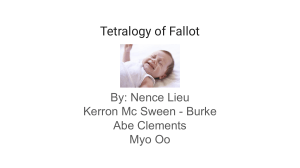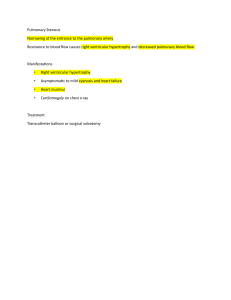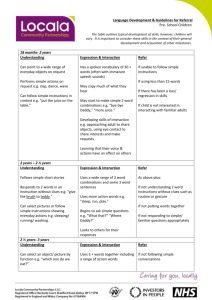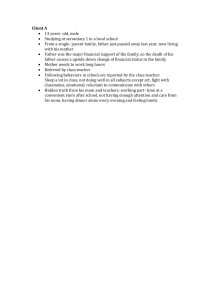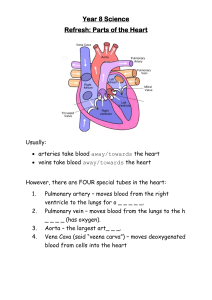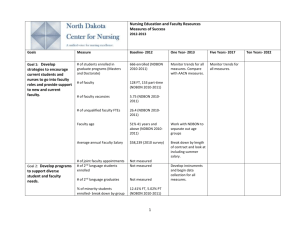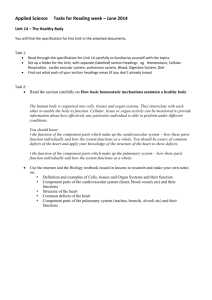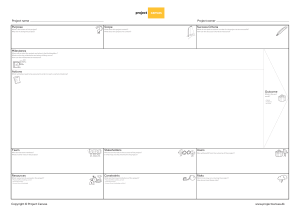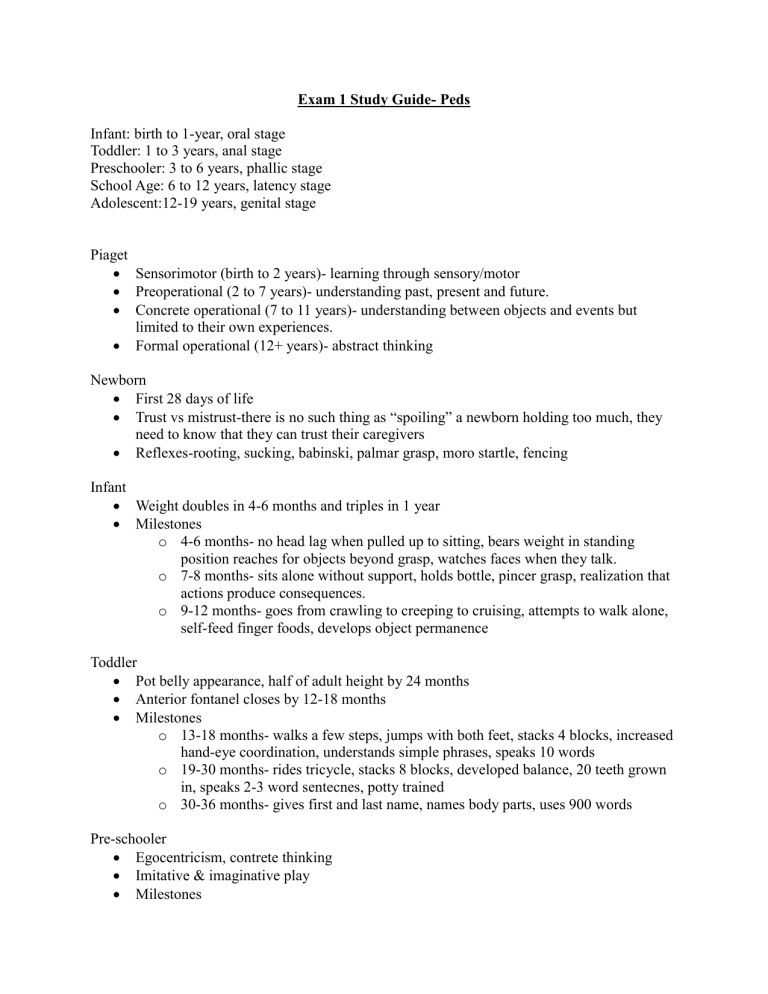
Exam 1 Study Guide- Peds Infant: birth to 1-year, oral stage Toddler: 1 to 3 years, anal stage Preschooler: 3 to 6 years, phallic stage School Age: 6 to 12 years, latency stage Adolescent:12-19 years, genital stage Piaget Sensorimotor (birth to 2 years)- learning through sensory/motor Preoperational (2 to 7 years)- understanding past, present and future. Concrete operational (7 to 11 years)- understanding between objects and events but limited to their own experiences. Formal operational (12+ years)- abstract thinking Newborn First 28 days of life Trust vs mistrust-there is no such thing as “spoiling” a newborn holding too much, they need to know that they can trust their caregivers Reflexes-rooting, sucking, babinski, palmar grasp, moro startle, fencing Infant Weight doubles in 4-6 months and triples in 1 year Milestones o 4-6 months- no head lag when pulled up to sitting, bears weight in standing position reaches for objects beyond grasp, watches faces when they talk. o 7-8 months- sits alone without support, holds bottle, pincer grasp, realization that actions produce consequences. o 9-12 months- goes from crawling to creeping to cruising, attempts to walk alone, self-feed finger foods, develops object permanence Toddler Pot belly appearance, half of adult height by 24 months Anterior fontanel closes by 12-18 months Milestones o 13-18 months- walks a few steps, jumps with both feet, stacks 4 blocks, increased hand-eye coordination, understands simple phrases, speaks 10 words o 19-30 months- rides tricycle, stacks 8 blocks, developed balance, 20 teeth grown in, speaks 2-3 word sentecnes, potty trained o 30-36 months- gives first and last name, names body parts, uses 900 words Pre-schooler Egocentricism, contrete thinking Imitative & imaginative play Milestones o 3 years- balances on 1 foot, alternate feet on stairs, copy circle, dress/undress self o 4 years- skips and hops on 1 foot, throws ball, draw stick figure with 3 parts o 5 years- walks backwards, jump rope, draw person with at least 6 parts, ties shoes School-Age Concrete operations Basic 6 motor skills- balancing, catching, throwing, running, jumping, climbing. First adult tooth by 6 years Puberty starts at 12 years old for girls, boys at 14 years old. Milestones o 6-7 years- print letters, ride bike, bathes & dresses self, uses silverware, tell time, reads, knows value of currency, demonstrates independence. o 8-9 years- plays team sports, draws 3D pictures, knows date, loses thinking that inanimate objects have senses, looks up to adults. o 10-12 years- developing abstract thinking, influenced by TV & social media, likes to discuss and debate, developing interest in opposite sex. Adolescence Growth spurts- females reach max height at 11 years old, males about 14 years old Identity vs role confusion Gender identity, intimacy & dating, mental health Milestones o 11-14 years- appetite increases and muscle mass increases. o 15-17 years-physical endurance increases, acne due to hormonal changes o 18-21- sexual maturity, stable appetite, dentition complete Pain Assessment Initial pain evaluation, intervention, reassessment Physiological indications of acute pain- dilated pupils, increased HR RR BP, decreased urine and stool output Pain scales o CRIES- neonatal postoperative pain assessment o FLACC- nonverbal assessment, used for infants. o Wong Baker Faces- toddlers and school age o Spoken scale (0-10)- age 7 to adult The goal in peds is to provide trauma preventative care, make things less scary and hurt less Fluid & Electrolytes Isotonic dehydration o Electrolyte deficits= water deficits o Most common Hypotonic dehydration o Salt deficits, water level is mostly normal. Hypertonic dehydration o Water deficits, electrolyte sare mostly normal Prerenal AKI- dehydration Intrinsic AKI- inside the kidney; diseases, toxic agents Postrenal AKI- obstructions, kidney stones, bladder obstructions IV fluids o Isotonic- LR (don’t use if renal function is unknown), 0.9% NaCl o Hypotonic- 0.45% NaCl. ¼ NS, 1/5 NS o Hypertonic- D10W, TPN Metabolic Acidosis ( pH, CO2)- bicarbonate loss, diarrhea Metabolic Alkalosis ( pH, CO2)- vomiting, diuretic therapy Cardiovascular Foramen Ovale- functions as the opening between atria; allows blood to bypass lungs. Ductus Arteriosis- opening between pulmonary artery and aorta; allows blood to bypass lungs. Becomes aortic ligament. http://w ww.inn erbody. com/im Indications of Cardiac problems- poor feeding, tachypnea, tachycardia, age/carpoor weight gain, failure to thrive, activity intolerance, developmental delays, prenatal history, family d01.ht history of cardiac disease ml Acyanotic CHD shunts lesions; left to right blood flow. o Atrial Septal Defect;ASD. o Ventricular septal defect; VSD, o Patent Ductus Arteriosus; PDA o Atrioventricular canal (AV canal) Obstructive lesions o Right ventricular outflow tract o Pulmonary stenosis o Left ventricular outflow tract o aortic stenosis, coarctation of aorta Cyanotic CHD- trunctus arteriosis, tricuspid atresia, tetraology of fallot Defects with increased pulmonary blood flow-ASD (between L &R atria; asymptomatic), VSD (between L &R ventricle, murmur L sternal border), PDA (between aorta and pulmonary artery, murmur L sternal border) Defects with decreased pulmonary blood flow- tetralogy of fallot, tricuspid atreasia (no tricuspid valve) Defects with obstruction of blood flow- tetralogy of fallot, tricuspid atresia (no tricuspid valve) Defects with obstructions of blood flow from the flow -COA (compacted aorta), aortic stenosis narrowing of ventricular outflow tract) Defects with mixed blood flow- trunctus arteriosis, transposition of the great arteries Tet spells-hyper cyanotic periods (idiopathic) Right sided heart failure- R for round; like swelling Left-sided heart failure- L for lungs Endocarditis- failure of valves due to s. viridah, usually had to have prosthetic/mech valve Rheumatic fever- inflammatory disease of the heart due to strep, always treated with PCN Respiratory Appearance, Work of Breathing, Circulation o Tone, inter-activeness, console, look gaze, speech or cry o Accessory muscles, respiratory rate o Color, mottled, pale dusky Acute Otitis Media- associated with RSV, middle ear infection o s/s-pain, pulling ear, temp, URI, enlarged lymph nodes, purulent discharge, doesn’t want to lay down Croup- barking cough, swelling of the upper airway Epiglottis- swelling of trachea, life-threatening; happens to older children o s/s- dysphonia, dysphagia, drooling, sore throat, fever, distressed respiratory effort, tripod position; child refuses to lay down; leans forward & uses arms for support; head in “sniffing position”. Laryngotracheobronchitis- most common; age 3 months to 4 years, viral infection of upper airway, chest x-ray ‘steeple sign” o s/s- barky cough, inspiratory stridor, retractions Bronchiolitis- lower respiratory tract, obstruction of airway from edema; happens with RSV & COVID
